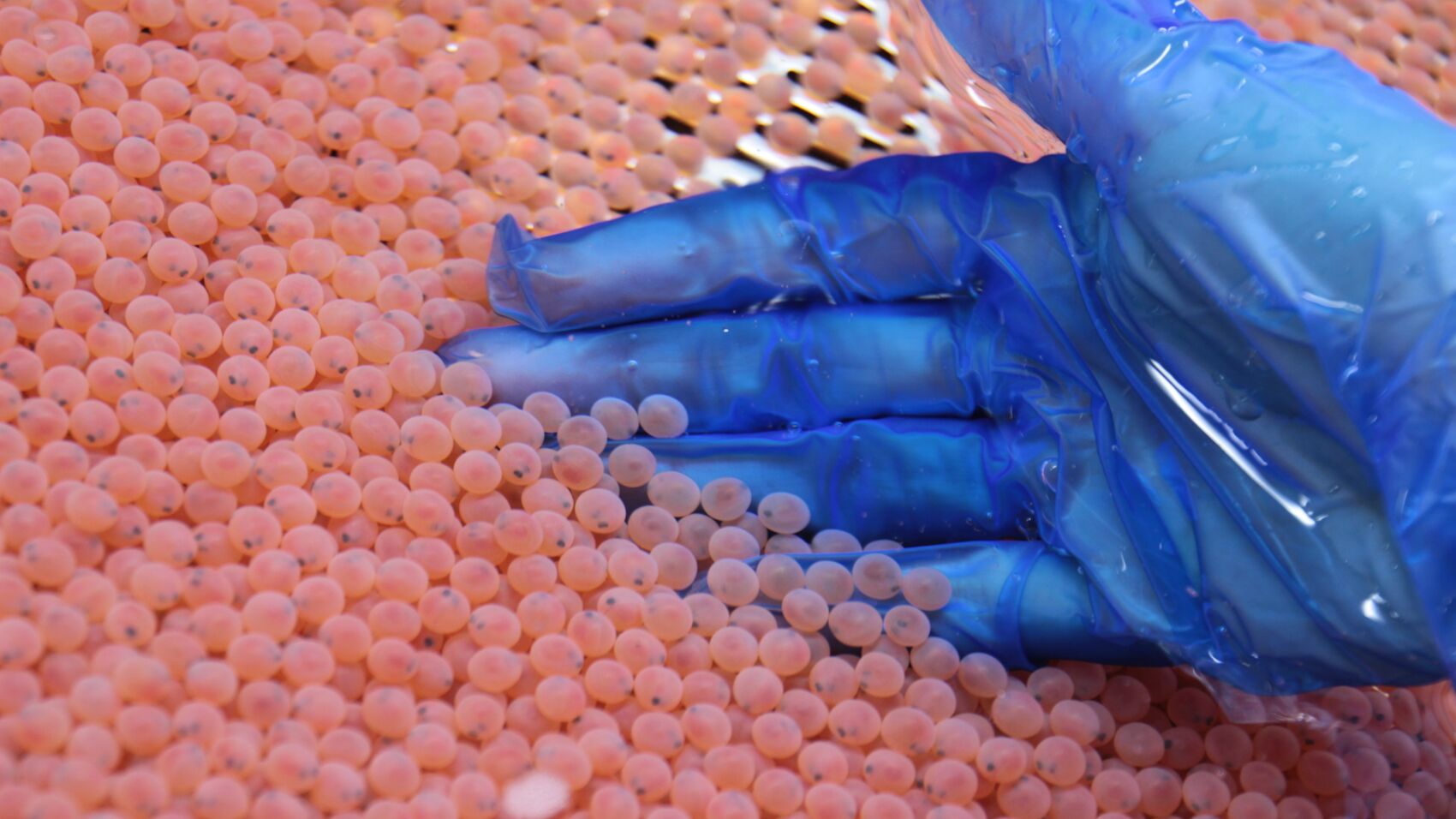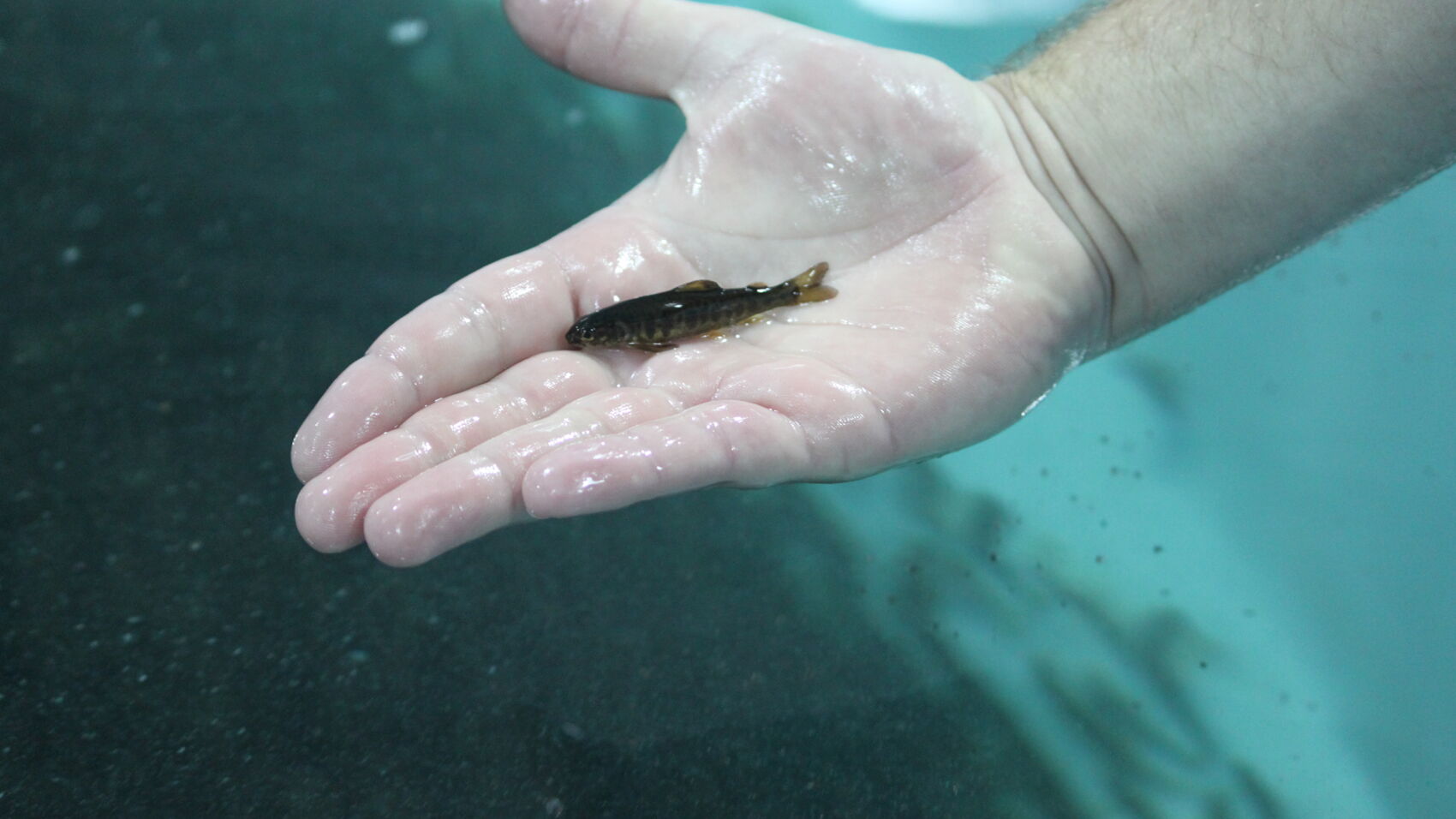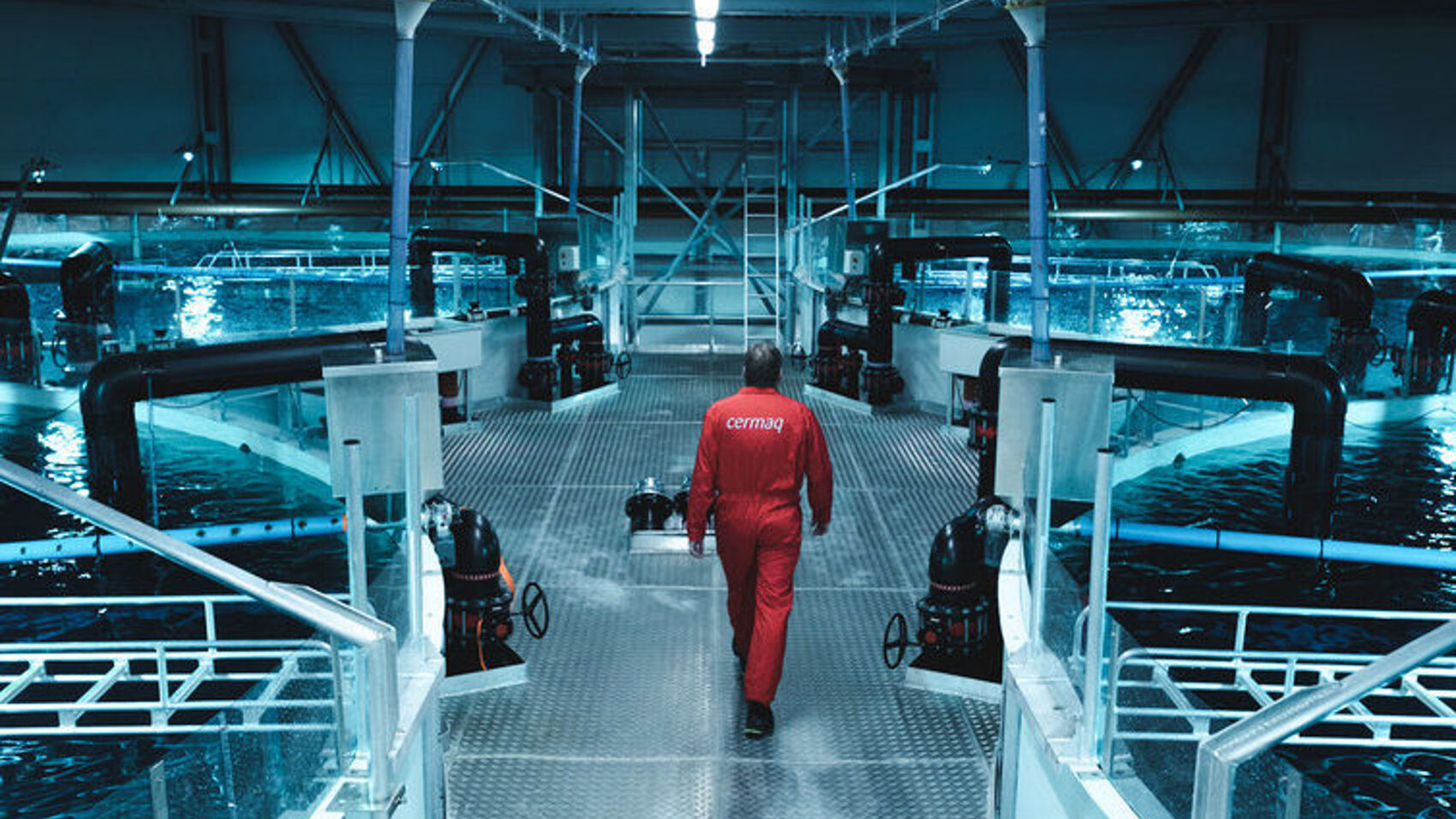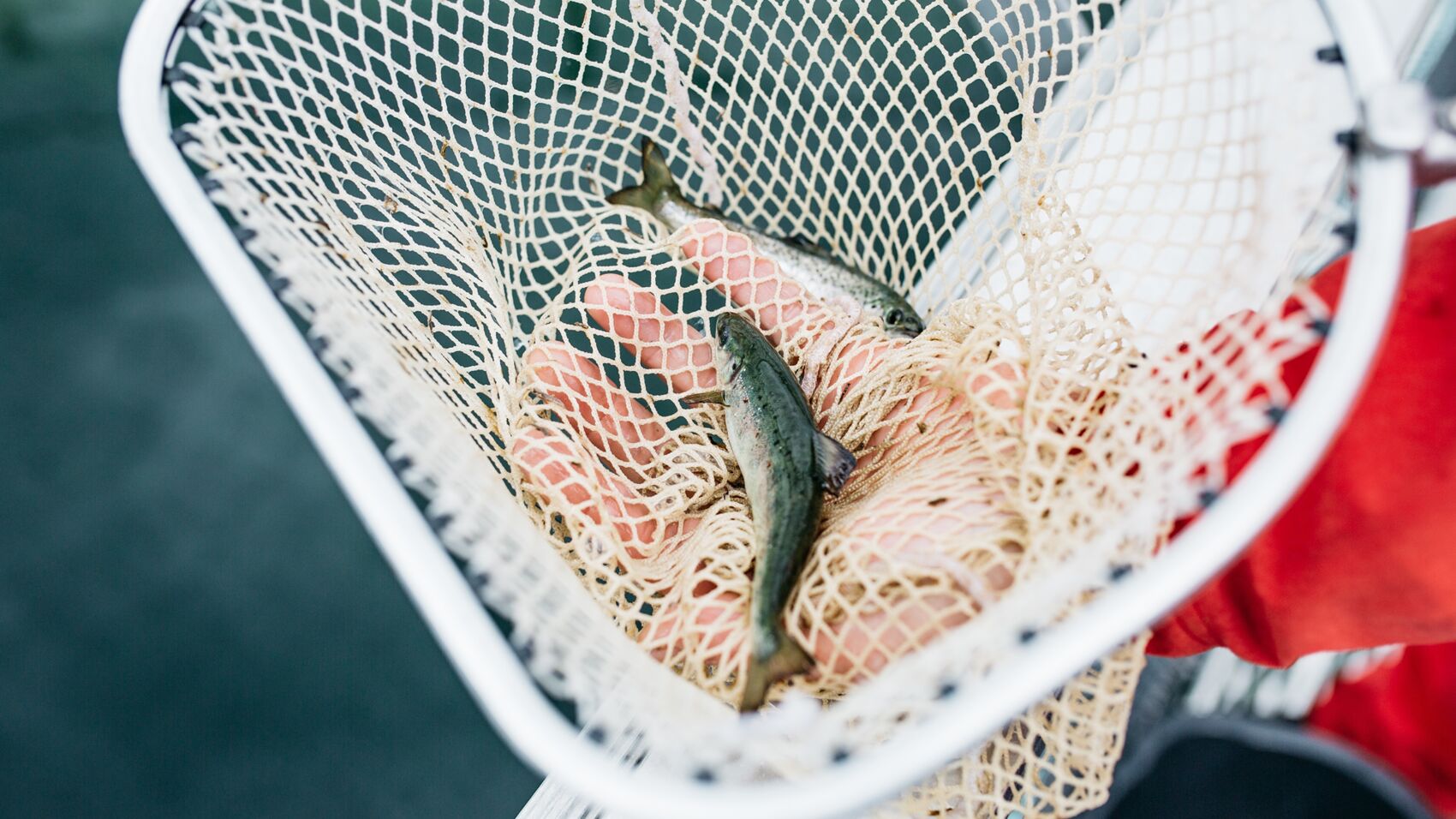Value Chain
Early rearing in fresh water
From egg to smolt, the fish spend about 14 months in a land-based hatchery. At the hatchery each fish is vaccinated to resist the natural viruses and diseases found in the oceans before they are transferred to salt water.
From eggs to smolt
During the incubation process the eggs are kept in dark. The trays are flooded with circulating fresh water.

After a further 200 day-degrees the eggs hatch and the alevins emerge, These are small fish with yolk sacs attached. During this period, they are quite active and develop rapidly until the yolk is almost completely consumed.
Alevins stay in the trays until they “button up”, which is when the egg sack is gone and they are ready to eat feed.
At about 800 day-degrees the alevins are ready to receive food through the mouth. It is important to provide good water quality, adequate temperature and excellent feed availability and composition.

The fish are now called fry, and stay in tanks where they are fed a fine feed crumble. While they grow, they are sorted based on size and gradually introduced to pelleted feed.

Smoltification
Smoltification is a complex biological process that enables the fish to live in sea water. Here there are many things that can go wrong if the farmer is not vigilant. It is therefore important to focus on the correct way to ensure smoltification and prepare the fish for the sea.
A main challenge when first entering sea water is the change in water and salt regulation.
In fresh water the inside of the fish has a higher concentration of salts than the outside. In sea water it is oposite.
Vaccination is done during this phase to protect the fish against dangerous pathogens.
Depending on the location of the hatchery, smolts are transferred to sea sites by well boats or in tanks on trucks or boats.

RAS or flow-through
There are two main systems for fresh water production:
Recirculating Aquaculture Systems (RAS) where water is recirculated and refilled with only a small share of new water, and Flow-Through Systems where water is passing through the tanks, with quality checks when entering cleaning of the water before released to the river.